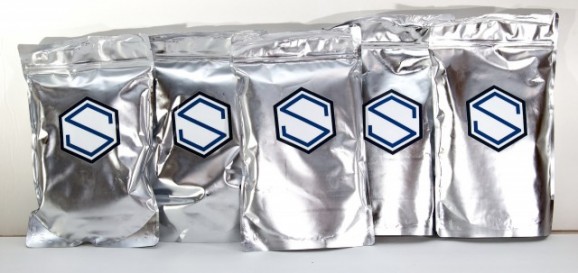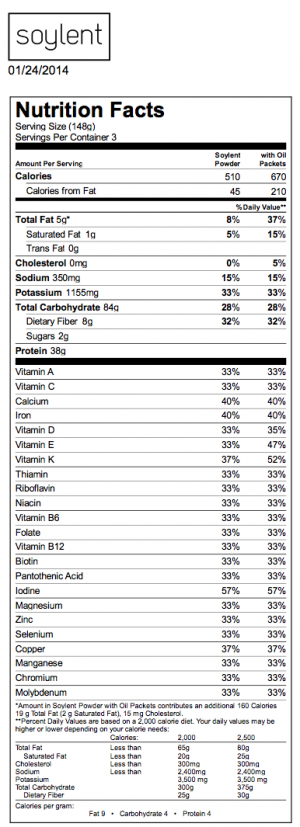Soylent Aims To Replace Meals
This article is more than 2 years old
 Say it with me: “Soylent Green is people!” After seeing that movie (or the MST3K episode featuring it), it’s hard to imagine anyone making a product called Soylent, much less anyone eating it. But hey, it’s the 21st century — it’s not all that hard to imagine anything anymore, is it? Get ready to dig into a hearty bag of Soylent!
Say it with me: “Soylent Green is people!” After seeing that movie (or the MST3K episode featuring it), it’s hard to imagine anyone making a product called Soylent, much less anyone eating it. But hey, it’s the 21st century — it’s not all that hard to imagine anything anymore, is it? Get ready to dig into a hearty bag of Soylent!
The meal-replacement product was developed by three guys in San Francisco who were sinking under enormous rent and other costs of living in the city, including the cost of food. Apparently, living on ramen and McDonald’s dollar meals wasn’t all that pleasant. One of the guys, Rob Rhinehart, decided that he’d rather not have to eat at all (who can blame him, given his diet?) So Rhinehart, a former engineering student, started to approach the problem like an engineer would. He figured that the high-water content of most nutritious foods was inefficient and wondered if there was a more effective way to get amino acids and lipids and all the nutrients we need to survive.
He started cataloging necessary nutrients and trying powders and pills said to contain them. He experimented with various mixtures of the stuff until he came up with something he could live on — Soylent. And then he started blogging about how much time and money he was saving, and how great he felt: “I feel like the six million dollar man. My physique has noticeably improved, my skin is clearer, my teeth whiter, my hair thicker and my dandruff gone.” And then came the Crowdtilt funding campaign, which was wildly successful, raking in over $2 million (the goal was $100,000).
In January, Rhinehart released preliminary nutritional information for Soylent, which started a lively discussion on the Soylent blog. The product meets the FDA’s standards, and while it started simply as a meal replacement, Soylent now claims to have a number of health benefits, such as reducing the risk of heart disease and certain cancers, as well as tooth decay. Such claims also adhere to FDA guidelines.

A full day’s worth of Soylent contains 2,000 calories, though they’ll ship the stuff with a scoop that allows for smaller or larger portions. Soylent 1.0 will also be certified Kosher, and is awaiting its gluten-free certification (apparently, there’s a hitch with the Oat Flour). Soylent is also vegan, using flaxseed oil, though there’s also a canola/fish oil blend. Given all the processed crap in most foods these days, it’s not too hard to imagine that Soylent could be a healthy alternative — at least, some of the time. Rhinehart claims to have consumed Soylent for 90% of his meals for the past 18 months and says he’s never felt better.
The first batch of Soylent was shipped to customers last week. Some compare it to Cream of Wheat or Metamucil (yum!), and say that it’s thick and filling. It’ll be interesting to see what happens with Soylent. Given that it doesn’t satisfy the social aspects of dining, or the smells, tastes, textures, etc., it’s hard to imagine it replacing food across the board, though I’m sure it will have its loyal followers. And just maybe, college students will get a little healthier.












